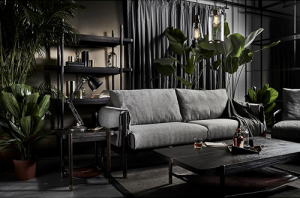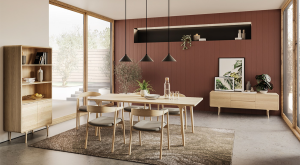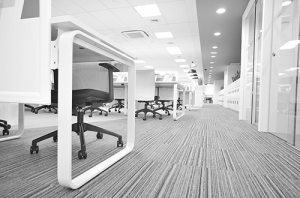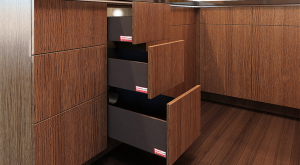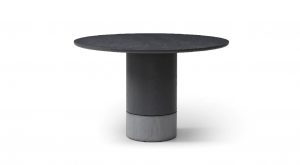Featured Post
Furniture Care Tips for Long-Lasting Quality
Furniture is a significant investment in our homes and workplaces. Proper care and maintenance are essential to ensure that our furniture remains in good condition for years to come. This article provides comprehensive furniture care tips for long-lasting quality, covering various types of furniture, including beds and other common pieces. By following these tips, you can protect your furniture from damage, maintain its appearance, and extend its lifespan.
Regular Cleaning and Dusting
Regular cleaning and dusting are crucial for maintaining the quality of your furniture. Dust and dirt can accumulate on surfaces, causing scratches and damage over time. Use a soft, dry cloth to dust your furniture regularly, and avoid using harsh chemicals or abrasive cleaners that can damage the finish.
For wooden furniture, it's essential to use a wood-specific cleaner or polish to maintain the natural beauty of the wood. Apply the cleaner or polish according to the manufacturer's instructions, and buff the surface with a soft cloth to remove any excess.
For upholstered furniture, regular vacuuming is necessary to remove dirt and debris from the fabric. Use a soft-bristled brush attachment to avoid damaging the fabric, and spot clean any stains or spills immediately to prevent them from setting.
For more information on the importance of regular cleaning, see the American Cleaning Institute's guide on furniture care.

Protecting Furniture from Sunlight and Heat
Direct sunlight and heat can cause furniture to fade, warp, or crack. To protect your furniture, avoid placing it in direct sunlight or near heat sources such as radiators or fireplaces. Use curtains or blinds to block out sunlight, and consider using furniture covers or throws to protect upholstered pieces.
For wooden furniture, it's also essential to maintain a consistent humidity level in the room. Extreme fluctuations in humidity can cause the wood to expand and contract, leading to cracks and warping. Use a humidifier or dehumidifier to maintain a stable humidity level, and avoid placing furniture in areas with high humidity, such as bathrooms or kitchens.
To learn more about the effects of sunlight and heat on furniture, visit the Furniture Industry Research Association's website.

Proper Handling and Moving of Furniture
Improper handling and moving of furniture can cause damage, such as scratches, dents, or broken parts. When moving furniture, always lift it rather than dragging it across the floor. Use furniture sliders or pads to protect the floor and the furniture legs.
For heavy or bulky pieces, it's best to enlist the help of others to avoid injury or damage. When disassembling furniture, keep all parts and hardware organized and labeled to make reassembly easier.
For tips on safe furniture moving techniques, see the Occupational Safety and Health Administration's guidelines.

Regular Maintenance and Repairs
Regular maintenance and repairs are essential for keeping your furniture in good condition. Inspect your furniture regularly for any signs of damage, such as loose joints, broken parts, or worn finishes. Address any issues promptly to prevent further damage.
For wooden furniture, consider applying a fresh coat of finish or polish every few years to maintain its appearance and protect it from damage. For upholstered furniture, consider having it professionally cleaned or reupholstered if necessary.

Caring for Specific Types of Furniture
Different types of furniture require different care and maintenance techniques. Here are some tips for caring for common types of furniture:
Beds
Beds are one of the most important pieces of furniture in our homes, and proper care is essential to ensure a good night's sleep. To care for your bed, follow these tips:
- Rotate the mattress regularly to prevent uneven wear and tear.
- Use a mattress protector to protect the mattress from spills and stains.
- Clean the bed frame and headboard regularly with a soft cloth and mild cleaner.
- Avoid jumping on the bed, as this can damage the frame and mattress.
Sofas
Sofas are another important piece of furniture in our homes, and proper care is essential to maintain their appearance and comfort. To care for your sofa, follow these tips:
- Vacuum the sofa regularly to remove dirt and debris.
- Spot clean any stains or spills immediately to prevent them from setting.
- Use a fabric protector to protect the upholstery from spills and stains.
- Avoid placing the sofa in direct sunlight, as this can cause the fabric to fade.
Dining Tables
Dining tables are often the centerpiece of our dining rooms, and proper care is essential to maintain their appearance and functionality. To care for your dining table, follow these tips:
- Use coasters and placemats to protect the surface from spills and scratches.
- Clean the table regularly with a soft cloth and mild cleaner.
- Avoid placing hot dishes directly on the table, as this can damage the finish.
- Consider using a tablecloth or runner to protect the surface.

Common Mistakes to Avoid
When caring for your furniture, it's important to avoid common mistakes that can cause damage or reduce its lifespan. Here are some common mistakes to avoid:
- Using harsh chemicals or abrasive cleaners, which can damage the finish or fabric.
- Placing furniture in direct sunlight or near heat sources, which can cause fading, warping, or cracking.
- Dragging furniture across the floor, which can cause scratches and damage to the legs.
- Ignoring small issues or damage, which can lead to more significant problems over time.
- Overloading furniture, such as placing too much weight on shelves or tables, which can cause them to break or collapse.

Eco-Friendly Furniture Care Tips
Caring for your furniture in an eco-friendly way not only helps the environment but also ensures that your furniture remains safe and healthy for your family. Here are some eco-friendly furniture care tips:
- Use natural cleaning products, such as vinegar, baking soda, or lemon juice, instead of harsh chemicals.
- Choose furniture made from sustainable materials, such as reclaimed wood or bamboo.
- Repurpose or upcycle old furniture instead of throwing it away.
- Donate or sell unwanted furniture instead of sending it to the landfill.
- Use energy-efficient lighting and heating to reduce your carbon footprint.
For more information on eco-friendly cleaning products, visit the Environmental Protection Agency's website.

Benefits of Proper Furniture Care
Proper furniture care offers numerous benefits, including:
- Extending the lifespan of your furniture, saving you money on replacements.
- Maintaining the appearance and functionality of your furniture, ensuring it remains comfortable and attractive.
- Protecting your investment, as furniture can be a significant expense.
- Reducing the need for repairs or replacements, which can be time-consuming and costly.
- Enhancing the overall aesthetic of your home or workplace, creating a more pleasant and inviting environment.

In conclusion, proper care and maintenance are essential for ensuring that your furniture remains in good condition for years to come. By following these furniture care tips for long-lasting quality, you can protect your investment and enjoy your furniture for many years.


